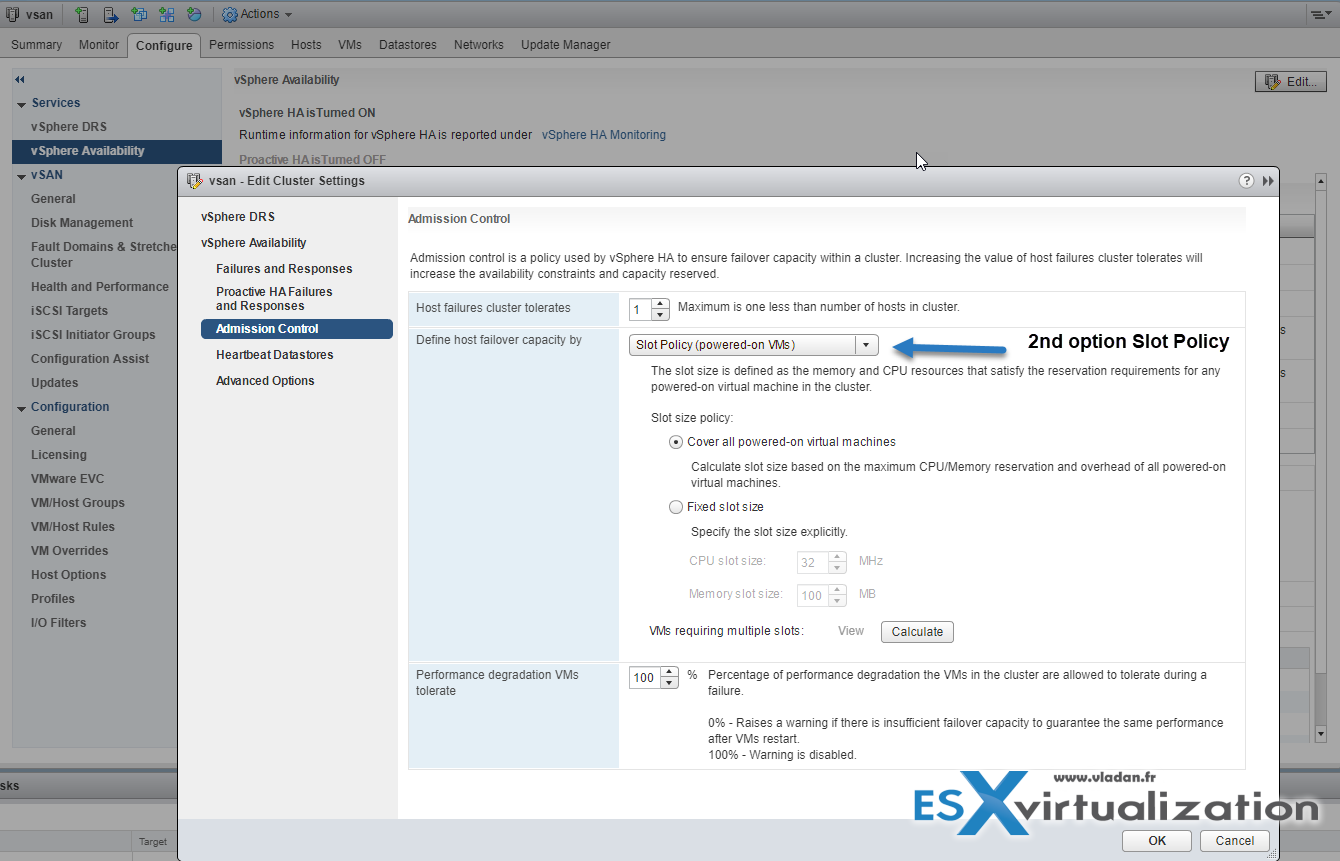Vmware Ha Slot Size Explained
Observe the following best practices for the configuration and usage of admission control for vSphere HA.
- Vmware Ha Slot Size Explained 2017
- Vmware Ha Slot Size Explained Chart
- Vmware Products Explained
- Vmware Ha Slot Size Explained 2
Sep 13, 2015 Depending on vSphere version, the default slot size is 0 MB of RAM and 256 MHz CPU (4.1 and earlier) or 0 MB of RAM and 32Mhz (5.0 and later). The admission control is performed by VMware HA with the following steps: Calculates the slot size (based on. Mar 02, 2017 A number of improvements that have been introduced in vSphere HA and DRS in the last several years are impressive. VSphere 6.5 continues this tradition by bringing new features into HA Admission Control, by adding flexibility with HA Orchestrated Restart and by enabling DRS to make more intelligent balancing. I will be trying a new format today.
Vmware Ha Slot Size Explained 2017
Vmware Ha Slot Size Explained Chart

The following recommendations are best practices for vSphere HA admission control.
Cause Slot size is calculated using the largest reservations plus the memory overhead of any powered on virtual machines in the cluster. However, vSphere HA admission control considers only the. Aug 12, 2009 This has always been a hot topic, HA and Slot sizes/Admission Control. One of the most extensive (Non-VMware) articles is by Chad Sakac aka Virtual Geek, but of course since then a couple of things has changed. Chad commented on my HA Deepdive if I could address this topic, here you go Chad. HA Slot Policy. You can also have option to choose “Slot Policy”. This is the default option prior to vSphere 6.5. Slot Size is defined as the memory and CPU resources that satisfy the reservation requirements for any powered-on virtual machines in the HA cluster. Take a look how HA slot Size is calculated. You have 2 options under Slot.
Online casino eu no deposit bonus. On this list, you will find 138 No Deposit Bonus Casinos among in the world. Using a free sign up bonus is a great way to test a casino without any risk for a chance to win real money!Our experienced team always provides visitors with the Best No Deposit Bonuses that allow you to Keep What You Win, including many Real Cash Exclusive Bonuses for new players.Use our filter tool to easily find the among this list, the most or the that offer No Deposit Bonuses as part of their sign-up package.
Vmware Products Explained

Vmware Ha Slot Size Explained 2
Select the Percentage of Cluster Resources Reserved admission control policy. This policy offers the most flexibility in terms of host and virtual machine sizing. When configuring this policy, choose a percentage for CPU and memory that reflects the number of host failures you want to support. For example, if you want vSphere HA to set aside resources for two host failures and have ten hosts of equal capacity in the cluster, then specify 20% (2/10).
Ensure that you size all cluster hosts equally. For the Host Failures Cluster Tolerates policy, an unbalanced cluster results in excess capacity being reserved to handle failures because vSphere HA reserves capacity for the largest hosts. For the Percentage of Cluster Resources Policy, an unbalanced cluster requires that you specify larger percentages than would otherwise be necessary to reserve enough capacity for the anticipated number of host failures.
If you plan to use the Host Failures Cluster Tolerates policy, try to keep virtual machine sizing requirements similar across all configured virtual machines. This policy uses slot sizes to calculate the amount of capacity needed to reserve for each virtual machine. The slot size is based on the largest reserved memory and CPU needed for any virtual machine. When you mix virtual machines of different CPU and memory requirements, the slot size calculation defaults to the largest possible, which limits consolidation.
If you plan to use the Specify Failover Hosts policy, decide how many host failures to support and then specify this number of hosts as failover hosts. If the cluster is unbalanced, the designated failover hosts should be at least the same size as the non-failover hosts in your cluster. This ensures that there is adequate capacity in case of failure.